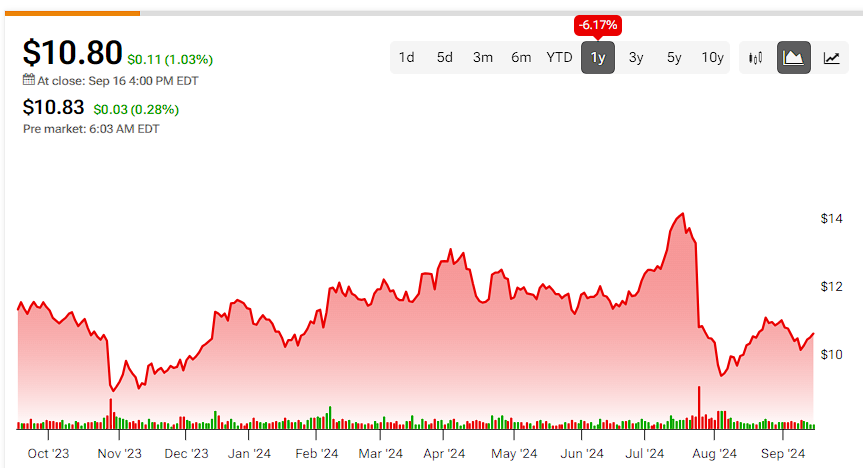In the throes of a rapidly changing global automotive landscape, Detroit giant Ford Motor Co. finds itself at a critical juncture. The latest performance metrics unveil a tale of resilience blended with challenges, as the company steers towards electrification of its vehicle portfolio. Despite steadfast performance in certain areas, Ford’s share price has endured a 10% dip this year, symbolizing the tumult within. This juncture beckons a neutral stance on the stock, as the path ahead appears sprinkled with hurdles and hope.

Ford’s Dual Narrative: A Dichotomy
The Q2 financial results paint a mosaic of Ford’s fortitude and frailty. With a revenue surge to $47.8 billion, showcasing a 6% year-over-year growth, driven chiefly by robust sales in the hybrid and commercial truck segments, the automaker appears to stand its ground. The commercial fleet, Ford Pro, notably flaunts a stellar 15.1% profit margin, hinting at a beacon of hope amidst the gloom. However, beneath this veneer of success lurk shadows of concern, notably in the form of declining Q2 earnings, sliding 27% from a year back. Challenges emanate from soaring costs linked to warranties, materials, and manufacturing intricacies. The Model e terrain, dedicated to electric vehicles, remains a harsh battleground, realizing a $1.1 billion loss in the quarter. This mirrors the broader struggles within the EV sector, marred by steep competition leading to price markdowns and profit squeezes.

The Pole Position of Ford in Market Dynamics
As the teeter-totter of positives and negatives tip in tandem, Ford’s vantage point shines bright in the gas-electric hybrid and commercial spheres. Nestled as the top gas-powered and second electric vehicle manufacturer in the U.S. based on sales, Ford wields formidable prowess in the hybrid arena. The soaring popularity of its hybrid portfolio, especially the F-150 hybrid pick-up, amplifies the enchantment. Notably, hybrid pick-up sales burgeoned at a triple pace compared to the overall market, laying a fertile groundwork for future exploits.
Moreover, Ford Pro stands tall as the torchbearer of the company’s futuristic growth trajectory. With a burgeoning lineup of vehicles and services like charging depots, supported by a robust fleet of 610,000 paid software subscriptions, Ford is ingeniously unearthing novel revenue streams with lucrative margins.
Competitive Quagmire and Cost Pinches
The ripple effect of competition and cost burdens forms the core rationale steering a neutral outlook on Ford. The foray into electric vehicles unveils a labyrinth of risks; the Model e fraternity grapples with profitability woes amidst a battlefield dominated by Tesla and other behemoths. Ford’s CEO Jim Farley’s poignant acknowledgment of the imperative to streamline production costs and avoid unprofitable electric vehicle launches mirrors the tumultuous terrain. Delving deeper, price concessions, surplus capacity, and consumer reluctance encompass the electrification blueprint, complicating Ford’s trajectory. Amidst a broader operational spectrum, cost amplifications from warranty claims and material inflation continue to gnaw at the company’s profitability, casting shadows on an otherwise vibrant canvas.
Ford’s Market Perception
The spectacles of Ford’s valuation underscore a market brimming with skepticism around the automaker’s knack for maneuvering through obstacles. Projections anticipate an earnings per share (EPS) hike to $1.90 for the year, yet murkiness envelopes Wall Street’s confidence in Ford’s long-term mettle. The stock’s current trading dynamics, sporting a meager forward price-to-earnings (P/E) ratio of 5.2, perch it near a multi-year nadir, significantly trailing the S&P 500 index’s average forward P/E ratio. These subdued metrics echo investor trepidation regarding Ford’s positioning in the electric vehicle expanse and its capability to wrangle surging operational expenses. Nonetheless, this dip unveils a chink of opportunity, awaiting Ford’s astuteness in capitalizing on it.
Should Ford orchestrate an upswing in its electric vehicle division’s balance sheet, leverage its burgeoning hybrid and commercial segments, and efficaciously navigate the cost labyrinth, the stock could witness a resurgence in the coming epochs.
The Buy-Sell Conundrum
Garnering a Moderate Buy moniker from a jury of 15 Wall Street wizards entranced by Ford’s magic, the stock tantalizes with a medley of prospects. A mosaic of five Buy, nine Hold, and one Sell recommendation bundled over the past quarter tickles the average price target of $13.67, hinting at a 24.39% upside. For those contemplating the harbinger of wisdom amid this cacophony, banking on the words of Bank of America Securities’ virtuoso, Michael Ward, delivers a dose of sagacity — where an average 11.53% returns and a 43% success rate over the epoch paint a picture of vivacity.

In Retrospect
Enveloped in a whirlwind of change, Ford’s destiny oscillates on the fulcrum of masterful adroitness in navigating the contours of a transforming automotive domain. The bastion Ford erects in hybrids and commercial vehicles illuminates a beacon of promise, albeit shadowed by the electric vehicle labyrinth and escalating costs. While apprehension beckons caution, the audacious few embracing risk may discern a sparkling allure in Ford’s evocative odyssey.

